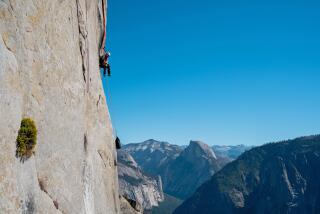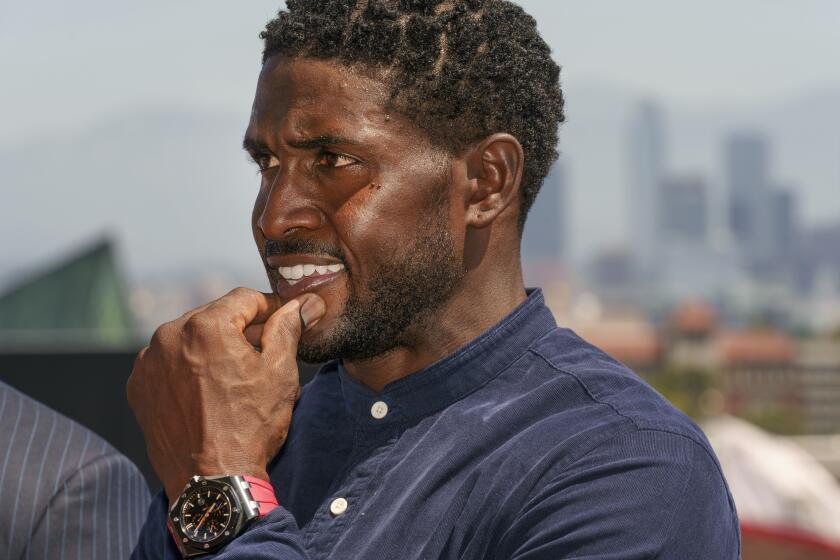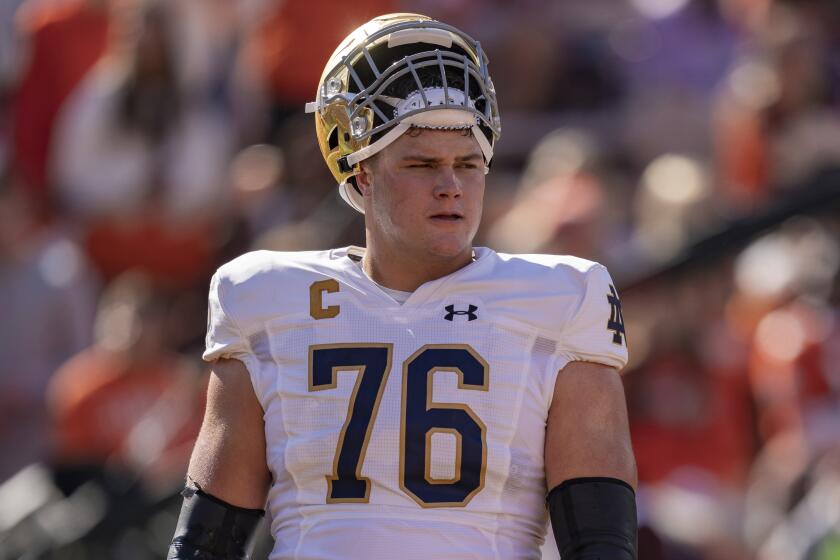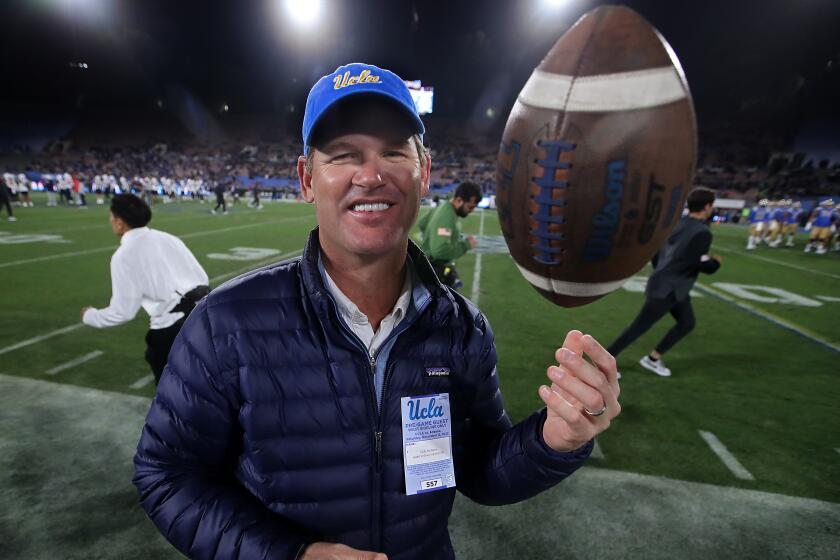Half a century after his first climb, Mt. Everest still beckons
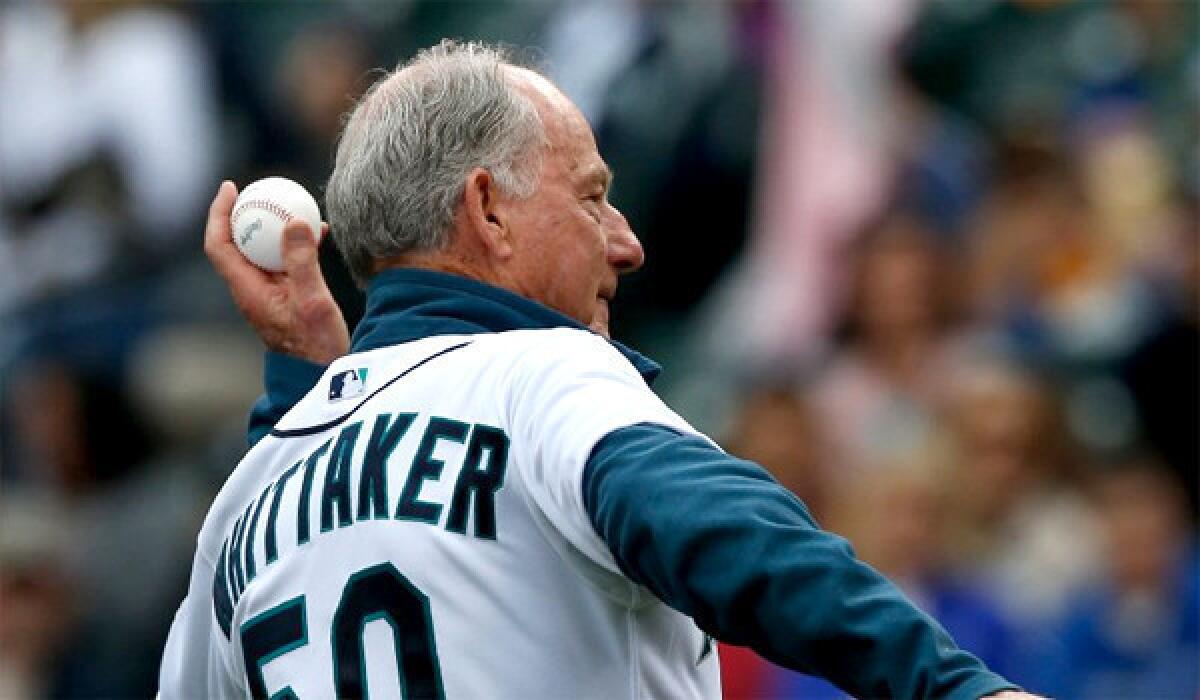
This column is for the adventuresome, and buying tickets to a Lakers game and yelling at the referees does not qualify.
Fifty years ago — May 1, 1963, to be exact — a tall and slender man named Jim Whittaker stood at the summit of Mt. Everest. That’s 29,028 feet above sea level, or about as high as you are when you fly coast to coast in a commercial jet. Think of looking out the window and having somebody wave at you at eye level.
Best estimates put the number of people making it to the top of Everest at about 3,000. Best estimates put the number of people who have died trying at 225.
Everest is the ultimate for those with a wandering heart and a curious mind. For those driven to try, “because it is there” is explanation enough. We go to the moon for the same reason. Everest climbers are astronauts with boots on the ground.
It is a fascination and a never-ending book of records. A couple once made it to the top and were married there. A blind man made it. So did a 76-year-old man and a 73-year-old woman. One local Sherpa made it 21 times.
We have such fascination with Everest that the first to make it to the top became household names. On May 29, 1953, New Zealander Edmund Hillary and Sherpa Tenzing Norgay stood on top of the world and took pictures to prove it.
When Whittaker, accompanied by Sherpa Nawang Gombu, took his last agonizing step to the top, at exactly 1 p.m. on that May 1, just 28 days shy of the 10-year anniversary of Hillary’s first ascent, only seven others had preceded them. Whittaker’s successful ascent was a landmark. He was the first American.
He was 34, a Seattle businessman who would be chief executive of REI outdoor equipment company for 25 years. His Everest achievement brought a congratulatory telegram from then-President John Kennedy and triggered a lifetime friendship with the Kennedy family. A day after Bobby Kennedy was shot in the kitchen of the Ambassador Hotel in Los Angeles, Whittaker was in Kennedy’s hospital room with Ethel and Ted Kennedy when Kennedy’s life support system was turned off and he died.
Those 50 years since the climb have passed, but Whittaker, now 84, can still get up there again in his mind.
“It was 35 below zero and the winds around us were about 50 miles an hour,” he says. “It’s kind of funny, because you aren’t petrified at all. I think the lack of oxygen makes you not as smart as you should be.”
He describes breathing up there to be as difficult as running around the block with a pillow stuffed against your face. Anything above 26,000 feet is called the “death zone.” Slowly but surely, your body is being eaten away by the lack of oxygen.
“We were on top for 20 minutes,” Whittaker says. “When you are up there, you are not ecstatic, you are not afraid. You’re really not anything. But in the back of your mind, you know one thing: You gotta get off. Half of the climb is getting up, the other half is getting down.”
Whittaker shows no arrogance, nor swagger, about mountains or his climbing. When he was a young tour guide around Seattle, he got into a bind and pledged to God that he would never climb again if he got down. He has had many close calls, including being caught in an avalanche on Mt. Rainier. Just days after his climbing team arrived at Everest base camp, one of Whittaker’s friends died in an ice avalanche.
“You don’t conquer mountains,” Whittaker says, “you conquer yourself.”
His trip to the top of the world has defined him. Doors have opened. Opportunities have arisen. People have been influenced.
He has updated a book he first did in 1999 called “A Life on the Edge.” It is out now. His favorite saying about the title is, “If you aren’t living on the edge, you are taking up too much space.”
He has led successful expeditions to another dangerous Himalayan peak, K-2. There was also a peace mission in 1990 that put climbers from China, the Soviet Union and the U.S. on Everest’s summit at the same time. Recently, he had a historic picture taken with John Glenn, the first American to orbit Earth, and Don Walsh, who reached the deepest point in the ocean — 35,800 feet down in the Mariana Trench off Guam — in a special submarine 53 years ago.
One of Whittaker’s five sons, Leif, has been to the summit of Everest twice. One time, he called his dad and mom, Dianne Roberts, from the top on a cellphone.
“About three cents a minute, I think,” Whittaker says, marveling at the technology.
He has been to Everest many times, but only went to the top that once. On his most recent trip, with no intention of reaching the summit, he went as high as 17,000 feet.
That was last year. He was 83.
More to Read
Get our high school sports newsletter
Prep Rally is devoted to the SoCal high school sports experience, bringing you scores, stories and a behind-the-scenes look at what makes prep sports so popular.
You may occasionally receive promotional content from the Los Angeles Times.

